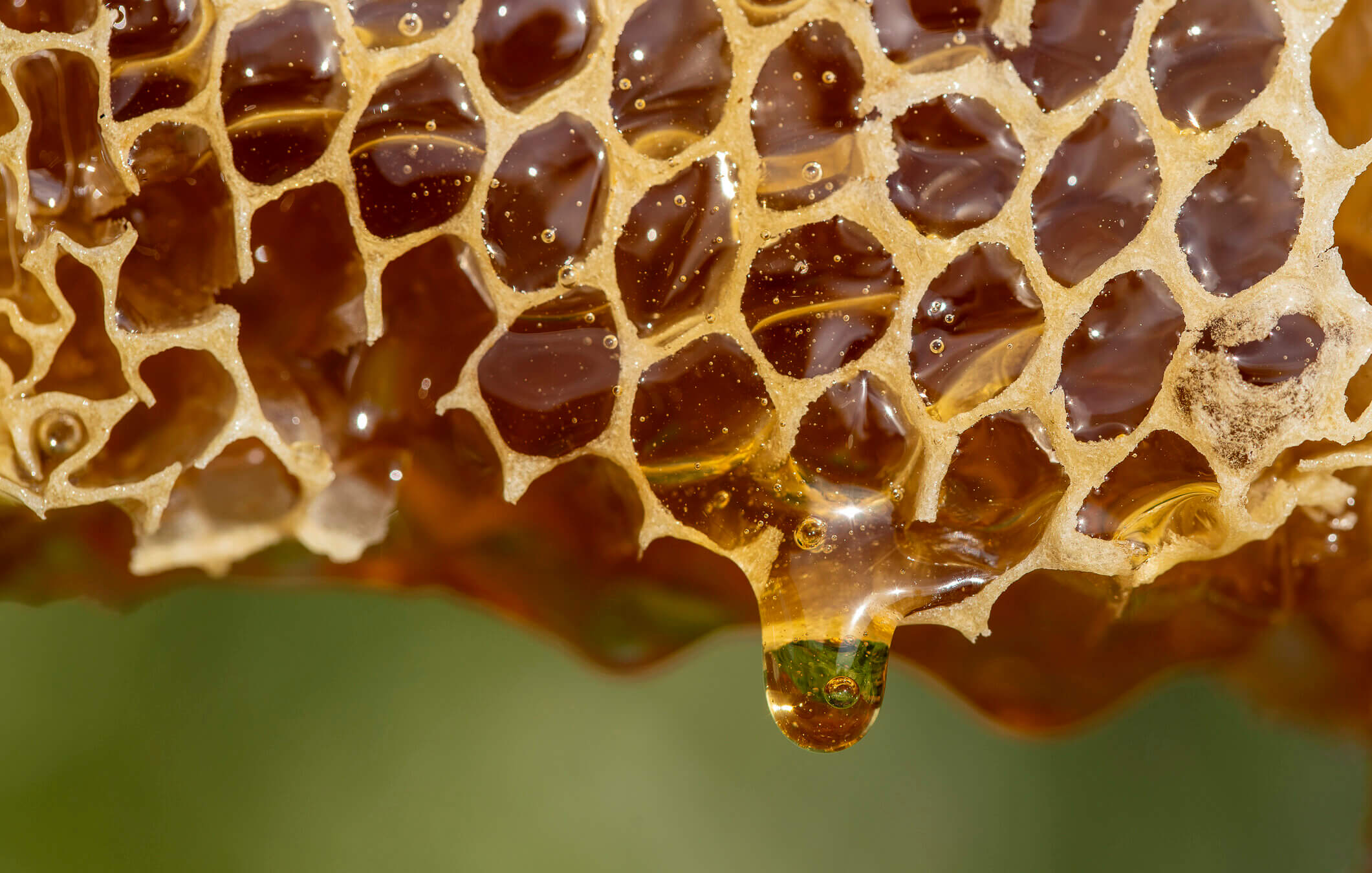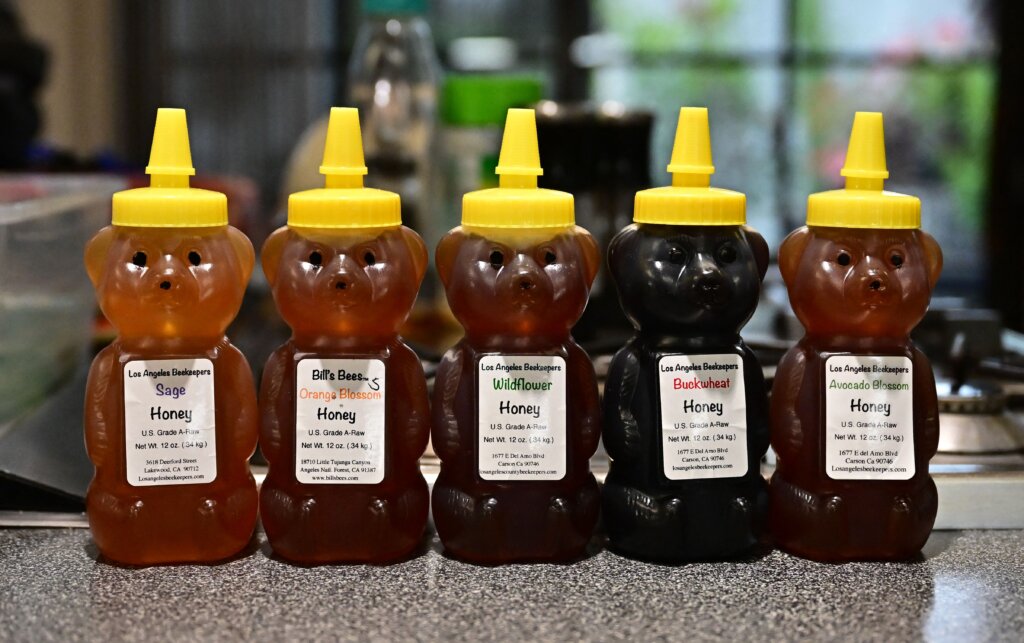How a honey sommelier could make your Rosh Hashanah even sweeter
Honey sommeliers can identify subtle notes to enhance your New Year’s sweetness

Honey dripping from honeycomb. Courtesy of iStock
Every Rosh Hashanah table needs a few things: challah, wine, apples and, of course, honey to bring sweetness to the new year.
Everyone has their favorite challah recipe and opinions on apple variety — if you ask me, a mottled pink-and-green Cameo apple is the ideal. Most people, too, have some opinions about wine, even if they’re not oenophiles who want to dive into the terroir of a Chablis.
For the average person, though, honey is simply honey: it’s sweet, it’s sticky, and it probably comes in one of those teddy bear-shaped squeeze bottles.
But it turns out that the world of honey is just as complex as wine or apples, with tasting notes like “chemical,” “floral” and “barnyard.” There’s the influence of terroir. There are even honey sommeliers.
At least, there are in Europe, where, like wine sommeliers, there are many levels of expertise and examinations and honey is a carefully regulated commodity. But in the U.S., there are only two people with a honey sommelier certification.
Soon, though, there might be three — Brooklyn-born Donna Marie DeFalco is in the process of getting her certification. And she also produces her own honey with her husband in the Catskills.
How to taste honey
The training is intense; honey sommeliers must learn to identify 22 different “mono-honeys,” or honeys made from a single specific flower, such as orange blossom or acacia.
First, there’s the aroma. Wine sommeliers swirl before sniffing; honey sommeliers smear the honey to smell better.
“One thing about honey is you smell more than you taste,” DeFalco told me over the phone. “The olfactory nerve is what gives us these memories of what things taste like. So we smell first, and then after we smell we taste. The flavor notes then change often, because what it smells like and what it tastes like are very, very different.”
DeFalco explained that tasters work from something called a honey wheel, not unlike a color wheel, that lists different flavor profiles of flower varieties. “Some of them are kind of funny — like chemical, or caramel, or candy-like, or like a barnyard,” DeFalco explained. “So within that, you could have something like a burnt caramel, or fruity. And then: Is it more like fresh fruit, or more like cooked or processed fruit? So you keep drilling down more and more.”
Darker honeys, such as those made from buckwheat or chestnut — DeFalco’s personal favorite, though, she said, not exactly a crowd-pleaser — often taste quite bitter.
And then there are the unnatural tastes: smoke, if a beekeeper has used too much of it to calm the hives, or even a metallic taste from rusty equipment.
Honey, here and abroad
If this sounds crazy to you — if you’ve never tasted a jam-like fruity honey, or a bitter one — it’s because most honeys in the U.S., unlike in Europe, are blends, meant to achieve a generic sweet flavor; the “clover honey” designation on those teddy bear-squeeze bottles is a catch-all term and the grades relate simply to the honey’s color in the bottle, not to content.
The U.S. has far fewer regulations on honey than Europe, DeFalco explained, and store honeys are often adulterated with added sugars or flavors or even pasteurized, removing the potential health benefits of honey, which include both soothing sore throats and helping with allergies thanks to their pollen content.
In Europe, to be a honey, “it must come directly from the hive,” DeFalco said. “It must be cut from the comb and is usually jarred within 24 hours.”

But even within the world of honeys, there’s a type that often gets overlooked: wildflower. Monofloral honeys have specific smells and tastes, such as the citrus notes of orange blossom honey, or the dark and bitter chestnut. Most local honeys, however, don’t stick to just one variety; after all, it’s hard to make sure bees only visit a specific type of flower.
That’s where wildflower honey comes in, which is what you’ll likely find at a farmer’s market or from a small, local producer. Wildflower honeys are influenced particularly by their terroir, the way the environment impacts a product such as wine or honey. Local wildflower honeys will vary based on the area’s flowers and weather.
DeFalco said that she initially got interested in honey because she knew that the comb from her hives tastes different from other Catskill producers, even those just a few miles away. She wanted to better understand what went into these different honeys. In the process, she learned not only about flowers and tasting, but also the science of honey, even testing honeys to identify the different pollens in them.
To promote local honey, she’s started a honey CSA. “Each honey gets its flavor notes put on it,” she said. “You can see how Riverbend honey is different from Two Queens honey.”
Pairing your honey for Rosh Hashanah
Once you understand a honey, then comes the best part: eating it. DeFalco said the complex notes in honeys are great at bringing out and balancing the tastes of whatever you’re eating.
Though DeFalco is not Jewish, she grew up in Brooklyn’s Borough Park, and her neighbors were Holocaust survivors — she fondly recalled the honey cake they shared — so she had a few ideas for Rosh Hashanah honeys.
For topping apples, she recommended eucalyptus honey, “because it brings out a flavor in the apple that you wouldn’t usually get,” she said.
On challah, she’d use a dark buckwheat so the bitter notes could balance the “the sweetness of the challah bread and the eggy texture.”
And for the main meal, she dreamed up a brisket paired with a sauce made from pomegranate cooked with orange blossom honey — or even a duck with orange blossom honey, the delicacy of which, she said, balances out the bird’s gamey flavor.
Most of all, she didn’t want the honey to be an afterthought. “With Rosh Hashanah, just like wine,” she said, “build up your honey with your food.”
















